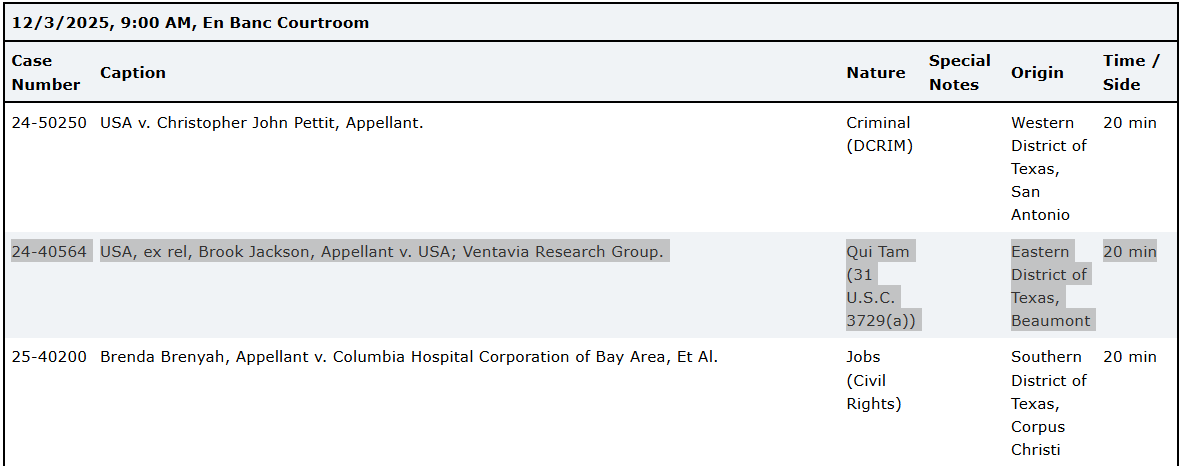Scusate @CorteCost , Presidente
#Amoroso , Vice-Presidente
#Antonini , Relatrice
#Sandulli, ma cosa Vi impedisce di leggere il Report della SottoCommissione Covid BIPARTISAN del Congresso Usa? che, tra l'altro, specificamente dichiara:
COVID-19 VACCINE: Contrary to what was promised, the COVID-19 vaccine did not stop the spread or transmission of the virus.
VACCINO COVID-19: Contrariamente a quanto promesso, il vaccino Covid-19 non fermó la diffusione o la trasmissione del virus.
https://oversight.house.gov/release/final-report-covid-select-concludes-2-year-investigation-issues-500-page-final-report-on-lessons-learned-and-the-path-forward/
Cosa Vi impedisce di leggere le schede tecniche con le quali è stata richiesta l'autorizzazione all'immissione in commercio di quei prodotti, i foglietti illustrativi e tutta la documentazine relativa che escludevano qualsiasi capacità di fermare la trasmissione del Sars-Cov2?
Cosa Vi impedisce di ascoltare la dichiarazione ufficiale al Parlamento Europeo di Ottobre 2022 della rappresentante @pfizer per l'Europa
#JanineSmall che escludeva ogni capacità al riguardo, che allego ancora una volta?
Cosa Vi impedisce di leggere la dichiarazione di @aifa di luglio 2023 che si allega con un mio video di commento?
https://youtu.be/DERs5k0mVys?si=HCFLZcJK_8Mncjhu
Cosa Vi impedisce, insomma, di riconoscere la realtà scientifica nota e riconosciuta in tutto il mondo?
Se solo leggeste la documentazione che Vi viene presentata non solo dal
#Governo.
Voi lo dovete spiegare, perché godete di privilegi assoluti, che possono giustificarsi solo in presenza di una totale indipendenza e conformità di giudizio alla realtà, appunto, e non per proteggerVi da posizioni che contrastino palesemente e indiscutibilmente con essa, giusto @Quirinale ?
Agendo in senso contrario, non cambiate la realtà, ma delegittimate l’Istituzione di cui occupate gli uffici.
Grazie.
Pc
@GiulioMarini2 @Giusepp99918361 @SandriAvv @RRobitt2011 @prof_baldini @Faillaluca @carlo_magnani @BellavitePaolo @AStramezzi
@SecKennedy @RWMaloneMD @MartinKulldorff @DrJBhattacharya @DrMakaryFDA @AmbasciataUSA
Source:
https://x.com/GfveGianfra/status/1988658685757808990?t=ZTEnuSyqCqh94jMp9oRfwA&s=09Scusate @CorteCost , Presidente #Amoroso , Vice-Presidente #Antonini , Relatrice #Sandulli, ma cosa Vi impedisce di leggere il Report della SottoCommissione Covid BIPARTISAN del Congresso Usa? che, tra l'altro, specificamente dichiara:
COVID-19 VACCINE: Contrary to what was promised, the COVID-19 vaccine did not stop the spread or transmission of the virus.
VACCINO COVID-19: Contrariamente a quanto promesso, il vaccino Covid-19 non fermó la diffusione o la trasmissione del virus.
https://oversight.house.gov/release/final-report-covid-select-concludes-2-year-investigation-issues-500-page-final-report-on-lessons-learned-and-the-path-forward/
Cosa Vi impedisce di leggere le schede tecniche con le quali è stata richiesta l'autorizzazione all'immissione in commercio di quei prodotti, i foglietti illustrativi e tutta la documentazine relativa che escludevano qualsiasi capacità di fermare la trasmissione del Sars-Cov2?
Cosa Vi impedisce di ascoltare la dichiarazione ufficiale al Parlamento Europeo di Ottobre 2022 della rappresentante @pfizer per l'Europa #JanineSmall che escludeva ogni capacità al riguardo, che allego ancora una volta?
Cosa Vi impedisce di leggere la dichiarazione di @aifa di luglio 2023 che si allega con un mio video di commento?
https://youtu.be/DERs5k0mVys?si=HCFLZcJK_8Mncjhu
Cosa Vi impedisce, insomma, di riconoscere la realtà scientifica nota e riconosciuta in tutto il mondo?
Se solo leggeste la documentazione che Vi viene presentata non solo dal #Governo.
Voi lo dovete spiegare, perché godete di privilegi assoluti, che possono giustificarsi solo in presenza di una totale indipendenza e conformità di giudizio alla realtà, appunto, e non per proteggerVi da posizioni che contrastino palesemente e indiscutibilmente con essa, giusto @Quirinale ?
Agendo in senso contrario, non cambiate la realtà, ma delegittimate l’Istituzione di cui occupate gli uffici.
Grazie.
Pc
@GiulioMarini2 @Giusepp99918361 @SandriAvv @RRobitt2011 @prof_baldini @Faillaluca @carlo_magnani @BellavitePaolo @AStramezzi
@SecKennedy @RWMaloneMD @MartinKulldorff @DrJBhattacharya @DrMakaryFDA @AmbasciataUSA
Source: https://x.com/GfveGianfra/status/1988658685757808990?t=ZTEnuSyqCqh94jMp9oRfwA&s=09









